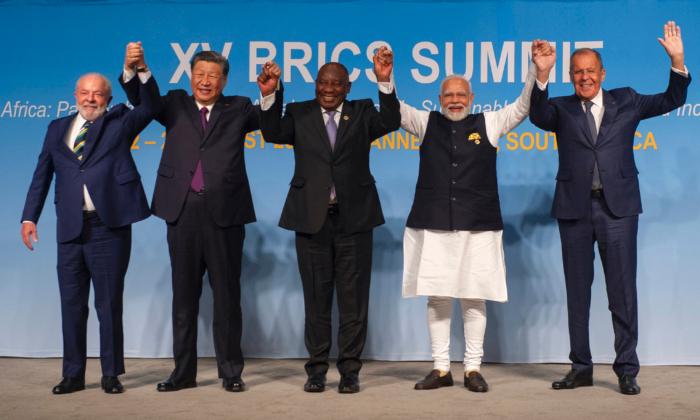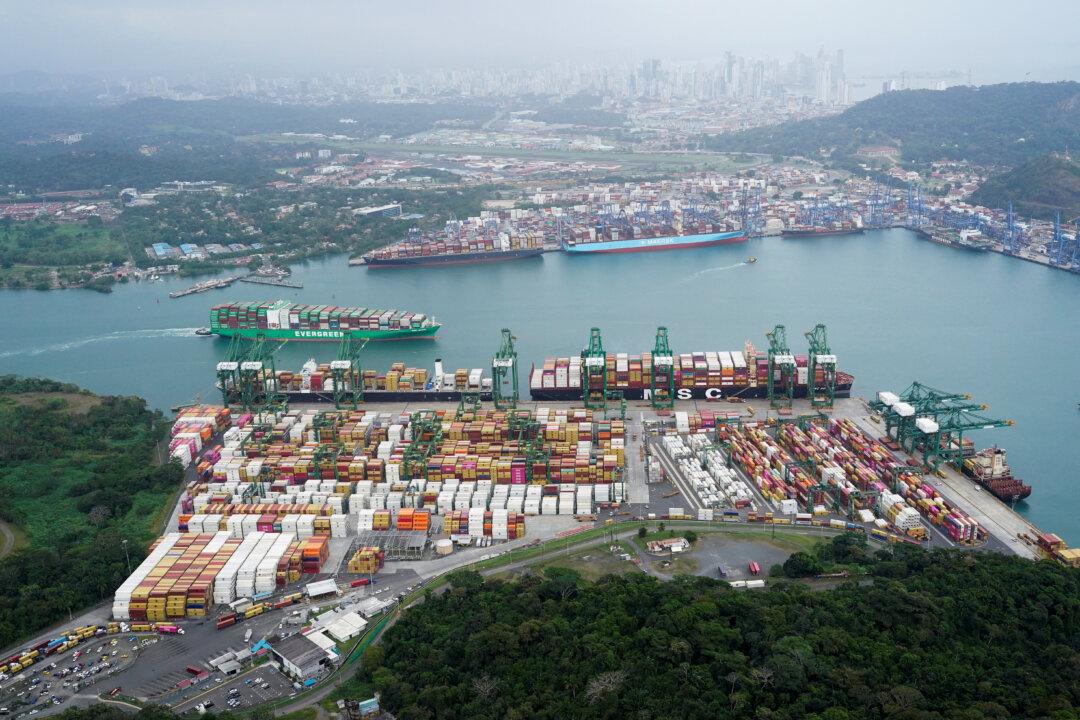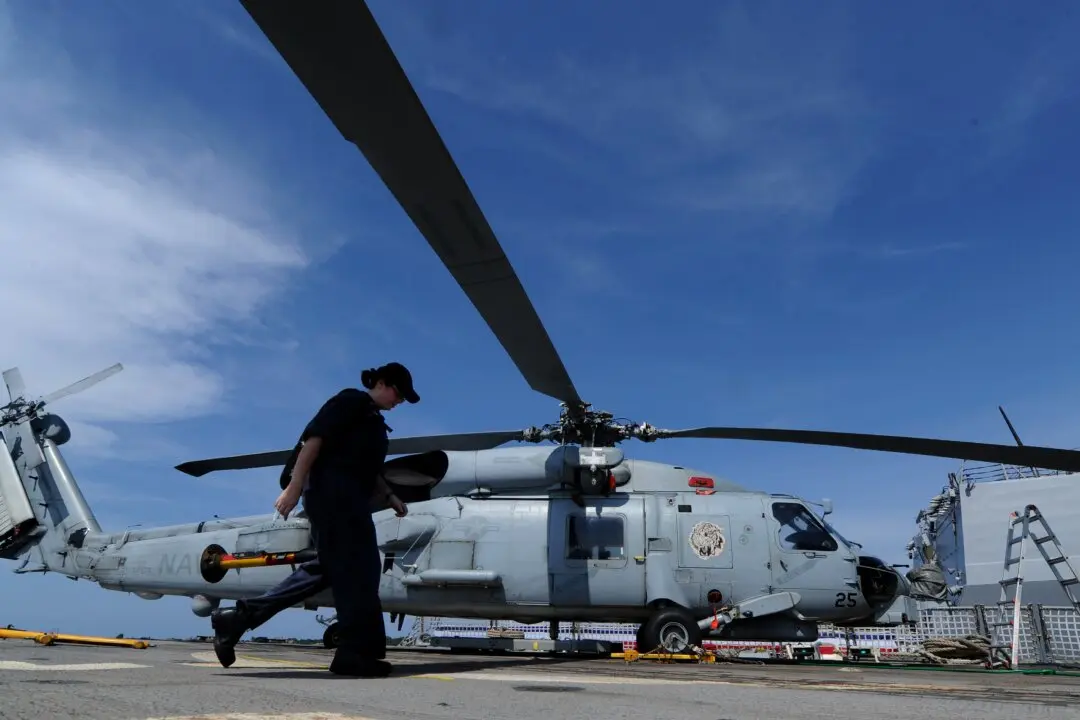The expansion of the BRICS bloc of states has highlighted the increasingly dissonant strategic and diplomatic initiatives by the United States and, lately, France and the European Union in Africa and the Middle East. These have hastened the decline of Western influence in those regions and the rise of a search by states there for alternative options.
It is not that the influence of the West’s rivals—China, Russia, and Turkey—has been adept. Still, their diplomacy has been at least more attuned to regional power groups than that of the United States and most of Europe.
A period of unrest and economic damage can be foreseen, particularly in Africa, until the situation stabilizes around new patterns of sovereignty, governance, and identity.
This period will see a continued weakening of Western economic and currency domination, albeit without necessarily a long-term compensating rise in, for example, the stable influence of the yuan, ruble, or even the Indian rupee, which is also “waiting in the wings.” In July, India, for example, signed a deal with the United Arab Emirates (UAE) to purchase oil in rupees instead of dollars. China, Russia, Venezuela, and most Persian Gulf states had already begun energy trades using currencies other than the U.S. dollar.
The emerging transitional period has seen a rising momentum of abandonment of Western prestige (and therefore its influences), including a trend against those U.S. dollar-denominated international economic frameworks, which connote debt structures that cannot be easily manipulated. This has also led, since 2021, to a rising rejection of Western-legacy democratic norms and a rising tide of non-democratic changes of government.
A concurrent trend of increased penetration of the regions by non-Western powers—China, followed by Turkey and Russia—was logical opportunistic exploitation of the growing flexing of sovereignty by regional states. Still, those initiatives, too, have their fragility. These moves away from Western influence mirror a worldwide trend toward the abandonment of U.S.-dominated “globalization,” as trade moves back toward 1960s and 1970s style trade patterns, with greater emphasis on bilateralism of trade as well as a revival of tools, such as barter and countertrade.
The decline of Western influence in the two overlapping regions resulted from the inevitable maturing of options and revived identity by (and within) African and Middle Eastern states and constituent historical societies, particularly after the Cold War and the peaking of global economic dependence on the U.S. dollar.
On Aug. 24, the loose BRICS bloc—named after its original members Brazil, Russia, India, China, and South Africa—expanded its membership to include Saudi Arabia, Iran, Ethiopia, Egypt, Argentina, and the UAE. Other states, possibly including Indonesia, have indicated their willingness to join the BRICS bloc in the near future. The move, however, may be more symbolic and opportunistic rather than meaningful in immediate strategic terms.
The main immediate beneficiary of the expansion of the bloc would appear to be Russia, but even that gain is incremental and, to a degree, intangible at this stage.
Brazilian President Luiz Inacio Lula da Silva announced at the BRICS summit in Johannesburg, South Africa, on Aug. 24 that the bloc would move toward a system of international trade settlements not reliant on the U.S. dollar. This is perceived as a continued reduction of the pervasive influence of the dollar, but it is in line with trends underway since about 2008. Moreover, it is unlikely to result in a clear, clean, or uniform system of trade credit settlements but, rather, a move back toward bilateralized agreements. In some instances, this would clearly include U.S. dollars, but Mr. Lula indicated a move toward BRICS national currencies.
This was clearly welcomed by China, Russia, and India, all of which have sought to achieve full acceptance and convertibility for their currencies. But what it means for all the BRICS trading states and their partners is that they will be under pressure to accept currencies that all lack the stability and global acceptance of the dollar.
This movement away from the dollar standard is a move toward uncertainty and instability. That is not to say that it was not inevitable, quite apart from the attempts by Beijing and Moscow (in particular) to transform BRICS into what seems like an anti-Western bloc. But it is a move toward a period of trade complexity and instability, which would mirror the 1960s–70s at best.
The positive note for the BRICS members was that a move toward currency diversification would also open up more creative opportunities to expand trade within the bloc, which includes three major economies–Russia, India, and China. Moreover, it would avoid contamination from the “dollar overreach” initiated by the U.S. government, particularly recently, in which Washington could “sanction” foreign governments or individuals simply because their international financial dealings involved the use of dollars, thereby rendering them subject to U.S. law, at least in the opinion of the U.S. government.

This was not a matter of “international law,” which is difficult to define as a constant, but the United States’ ability to internationalize the imposition of U.S. law.
This enabled the United States to unilaterally seize foreign assets as a means of political coercion of sanctioned targets. It was hardly surprising that this process—particularly evident in the sanctioning of Russian, Chinese, and North Korean officials—would cause a backlash.
It should be salutary for the U.S. and other Western observers to note that India—a key component in Washington’s “Quad” strategy (utilizing India, Japan, Australia, and the United States in an alliance against BRICS member China)—is also a key member of BRICS and that India is also hosting the next summit of the Shanghai Cooperation Organization (SCO).
The SCO, overlapping as it does with BRICS, is equally antithetical to the West. However, none of this means that—despite the strategic intentions of Beijing and Moscow—all BRICS or SCO member states are hostile to the West—quite the contrary. Many member states merely cannot avoid the opportunities for trade and security offered by BRICS and the SCO.
The West has just lost its once exclusive appeal as a guarantor of economic and security success. Moreover, the reaction to the recent U.S. “dollar overreach” through sanctions regimes may have caused the most serious structural damage to the West in a half-century.
The BRICS states, old and new, face their own challenges, mostly from internal stressors but also from interstate rivalries, mostly between members of BRICS, quite apart from any rejection of the United States or other Western states or against U.S. dollar domination by BRICS members.
The most severe structural frailty within BRICS—insofar as it affects the global economy and stability—is within mainland China, which is facing an internal economic and possibly political implosion.
The Aug. 22-24 BRICS Summit was significantly held in Johannesburg, South Africa—a country undergoing a steady process of economic implosion marked by massive corruption and internal violence. The potential for South Africa to break up as a unitary state was, even at the time of the summit, increasingly evident. The inertia for South African collapse has been underway for some time and has gone uncorrected.

Incoming BRICS member Argentina—while not facing the same levels of internal security breakdown seen in South Africa—is in serial default of international financial obligations and sees BRICS membership as a way of accommodating China as Argentina’s major lender, and as a means of gaining new trade and wealth outside the dollar zone. None of this, however, directly helps Argentina to address its present inflation level of around 100 percent a year. Inflation levels are high in other BRICS members, such as South Africa, Ethiopia, and Egypt; China is entering the reverse problem: deflation.
And now, the BRICS bloc has agreed to accept Ethiopia as a member at a time when that country was entering a new phase of internal violence, much of it driven by the strenuous support given by the United States to the now-quiescent uprising by extremist Marxist-ethnic group, the Tigray People’s Liberation Front (TPLF). That U.S. support for the TPLF was a direct assault on the national government under Prime Minister Abiy Ahmed Ali, causing Addis Ababa to turn to Moscow, Beijing, and Ankara for support to fight the TPLF.
Now, Ethiopia is less within the reach of U.S. suasion, even though the country still depends heavily on U.S. food aid. Even that dependence is diminishing as Ethiopia moves—despite the continued impact of the La Nina weather pattern—toward the production of grain surpluses. Thus, the United States has also diminished its capacity to stop Mr. Abiy from using ethnic warfare to suppress Ethiopia’s Amhara and Afar populations and to give dominance to his own political-ethnic group, the Oromo.
Warfare within Ethiopia had returned to genocidal levels by mid-2023, as Mr. Abiy’s Oromo-dominated national defense forces attempted to wipe out large segments of the Amhara and Afar populations and those who supported the Ethiopian Tewahedo Orthodox (Christian) Church. As a Pentecostal (Protestant) Christian, Mr. Abiy views the Amhara and Orthodox Christians as the embodiment of Ethiopian nationalism, which argues against ethnically- or religiously-driven separatism in Ethiopia.
The actions of the Abiy government, and earlier by the TPLF, fit the very specific definitions of genocide outlined in the 1948 United Nations Genocide Convention: The “intent [or action] to destroy, in whole or in part, a national, ethnical, racial or religious group.”
Significantly, Mr. Abiy was able to mobilize Amhara volunteers to stop the U.S.-backed TPLF war against the central government in 2022 but has subsequently attempted to use the Oromo and others to suppress the Amhara. In this, however, he is facing significant opposition, and the Amhara regional Fano (volunteer fighter) forces, plus the Amhara Special Forces, have inflicted major setbacks on the Oromo-dominated federal forces. Mr. Abiy’s appointed regional Amhara government, run by his Prosperity Party (PP), has virtually collapsed, and the PP Amhara leadership has fled to Addis Ababa. And the capital city is now experiencing an explosion of lawlessness and kidnappings for ransom.
Ethiopian unity—such as it now is—has been sustained by the national appeal of the Ethiopian Orthodox Church and the traditional Ethiopian identity based on three millennia of Solomonic culture and rule, represented by the Ethiopian Crown (which is now not governing but remains highly influential). As a result, the Church and the Crown, which are the unifying symbols for the country, are under attack not only from the Abiy government but also from such external forces as the United States and Egypt, which want to see Ethiopia broken up so that it does not represent a power dominating the lower end of the Red Sea sea lanes.
Significantly, Egypt is one of the second-round expansion candidate members for BRICS. Apart from its public rivalries with Ethiopia over control of the Nile waters, Cairo’s challenges are largely internal, primarily due to inherited structural problems. Of these, former President Gamal Abdul Nasser’s (in power from 1956 to 1970) decisions to develop Cairo at the initial expense of a whole-of-nation modernization and to accept a Soviet proposal to build the ultimately inefficient Aswan High Dam (started in 1960) have left the present government of President Abdel Fattah al-Sisi in economic and political distress ahead of elections due to be held in February 2024.
The result has been that the Sisi government—faced with a quadrupling of Egypt’s population since the early Nasser years and with no increase in water supplies—has been forced to find an external scapegoat for the crises that envelop Egypt. That had to be Ethiopia, as host to the headwaters of the Blue Nile. Moreover, Cairo’s population explosion—from 3.15 million when Nasser seized power in 1956 to 22.183 million in 2023—has created a new political force directly susceptible to water shortages.
So there are numerous “mutual hostilities” within BRICS, as within the SCO, and these are often fundamental strategic differences that preclude the pacts from being fully functional security blocs. Equally, the North Atlantic Alliance (NATO), which had been characterized until the end of the Cold War as a pact unified by a common threat, is now riven with intrabloc antagonisms; so, too, could the European Union (EU) thus be characterized.

The internal wars in Ethiopia have, however, unavoidably moved the country away from its high-growth trajectory. But while the Abiy government has been attempting to retain and enhance links with Western trading partners, it was left with few options to pursue growth if it did not embrace new economic ties and monetary options with the Persian Gulf states (notably Saudi Arabia and the UAE), as well as Russia, Turkey, and China. What is significant is that the largest Ethiopian export commodity, coffee, goes almost exclusively to non-BRICS trading partners at present.
Within the emerging BRICS-plus framework, it is also significant that the bloc now includes many of the world’s largest producers of oil and gas—Saudi Arabia, Iran, the UAE, and Russia. So the bloc is at least statistically strategically significant, but that would also impute a degree of common policy among member states. The brief period of unified action of OPEC (the Organization of Petroleum Exporting Countries) decades ago showed how difficult it was for nation-states to agree on common policies regarding commodity exports.
In any event, the United States could easily maintain energy independence, and Western Europe (France, the UK, etc.) could well return to a more balanced energy framework, with the resumption of nuclear power and coal mining for energy and steel production.
BRICS also did not expand into West Africa, where the Economic Community of West African States (ECOWAS) is facing severe challenges, particularly from the “less than democratic” recent transitions of power in six of its 15 members (Niger, Mali, Burkina Faso, Guinea, Sierra Leone, and Nigeria). BRICS rejected an application from Algeria—which abuts the ECOWAS zone—to join the bloc because Algeria’s economic performance did not meet BRICS criteria.
Questionable economic performance, however, has proven to be no barrier to membership in BRICS. Algiers has maintained a strong relationship with Moscow, its primary defense equipment supplier. Hence, the BRICS decision implied that Russia was unable to help Algeria and that China—whose leader, Xi Jinping, attended the BRICS summit in Johannesburg—chose not to.
Indeed, the absence of Mr. Xi from his scheduled speaking part at the Johannesburg summit indicated that other issues were being addressed behind the scenes. Part of this could have resulted from internal moves within the Chinese Communist Party (CCP) against Mr. Xi, demanding his urgent attention, or that he was engaged with his South African counterpart in planning other moves. Mr. Xi and his delegation worked with the South African leadership on plans to depose the king of neighboring Eswatini.
Turkey was pointedly absent from the list of new BRICS members or applicants, even though Turkish President Recep Tayyip Erdogan had attended the BRICS summit in July 2018 (and had committed Turkey subsequently to membership in the SCO). Ankara had a single representative at the Johannesburg summit. There are unanswered questions as to why Turkey has thus far refrained from joining BRICS, especially given the reality that the country has a significant interest in the territories of the bloc.
Turkey is a major factor in supporting jihadist insurrection in Africa and the Middle East, raising the question of whether Ankara might not yet be welcome within BRICS, despite its growing anti-U.S. credentials.
In any event, while the BRICS expansion, just like the expansion of NATO, is laden with symbolism rather than substance, it is of strategic importance because it reflects the reduced influence and prestige of the United States and the West generally.







